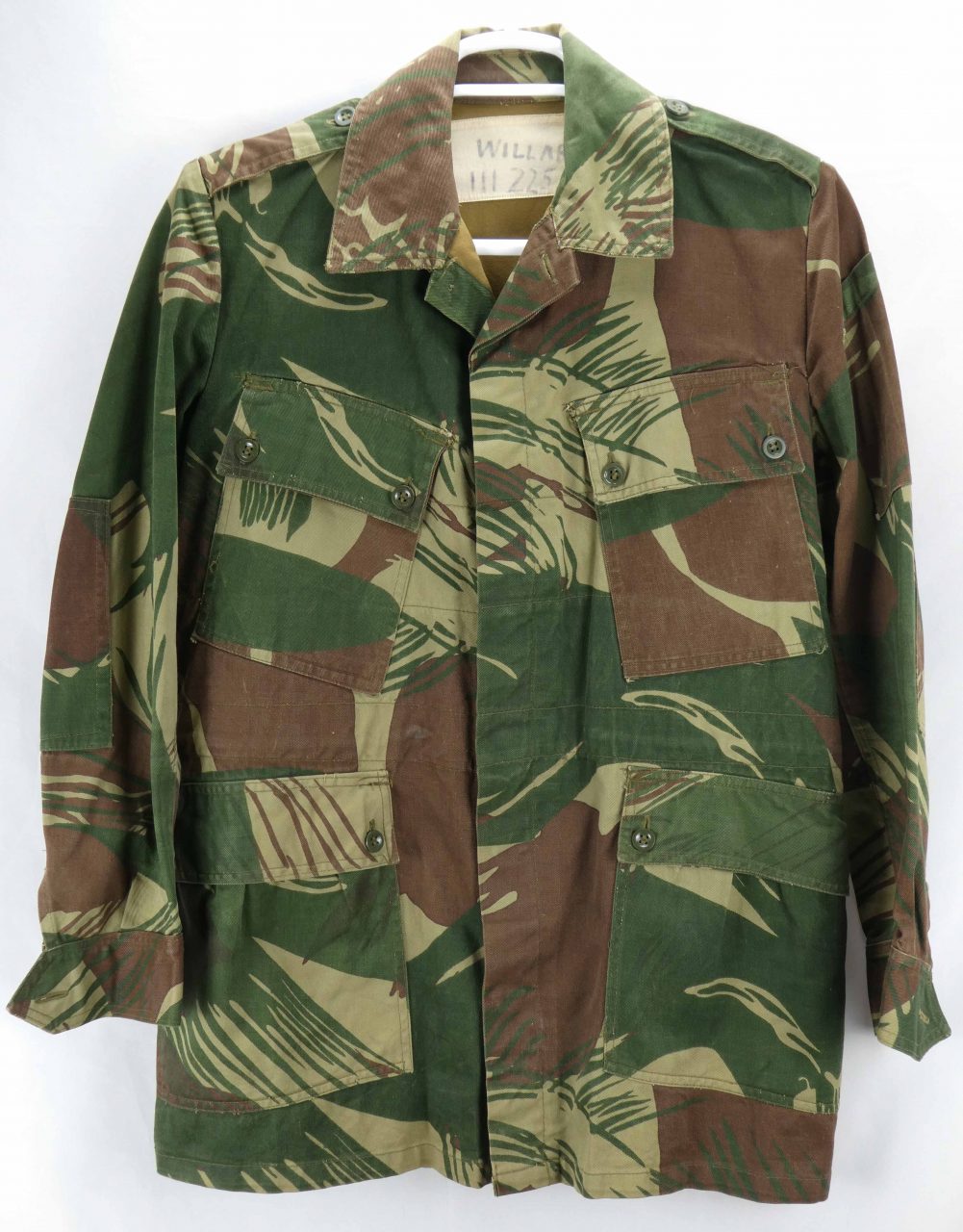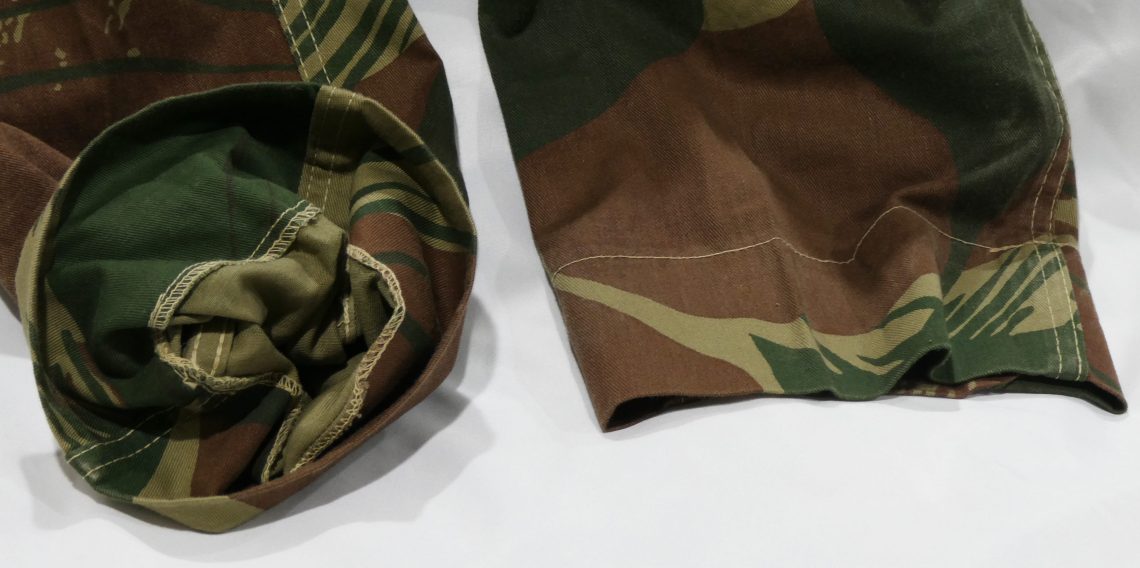The items on this page are all in the more common, standard version of the Rhodesian camouflage pattern used throughout the 1970’s most notably during the Rhodesian Bush War. This page is not an extensive list of all possible items and variations of those item that have been made in this camouflage pattern.
Bush Jackets
These tended to be made from thicker cotton drill twill material in a British combat smock jacket style cut.
Sample 1: Earlier (Mid-War?) Bush Jacket #1
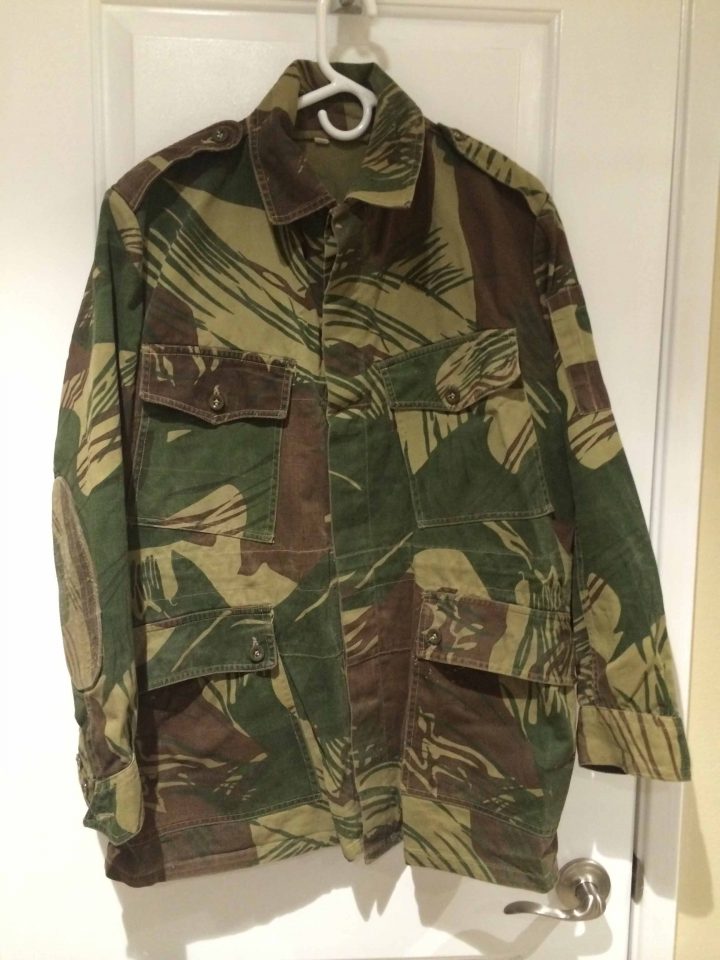
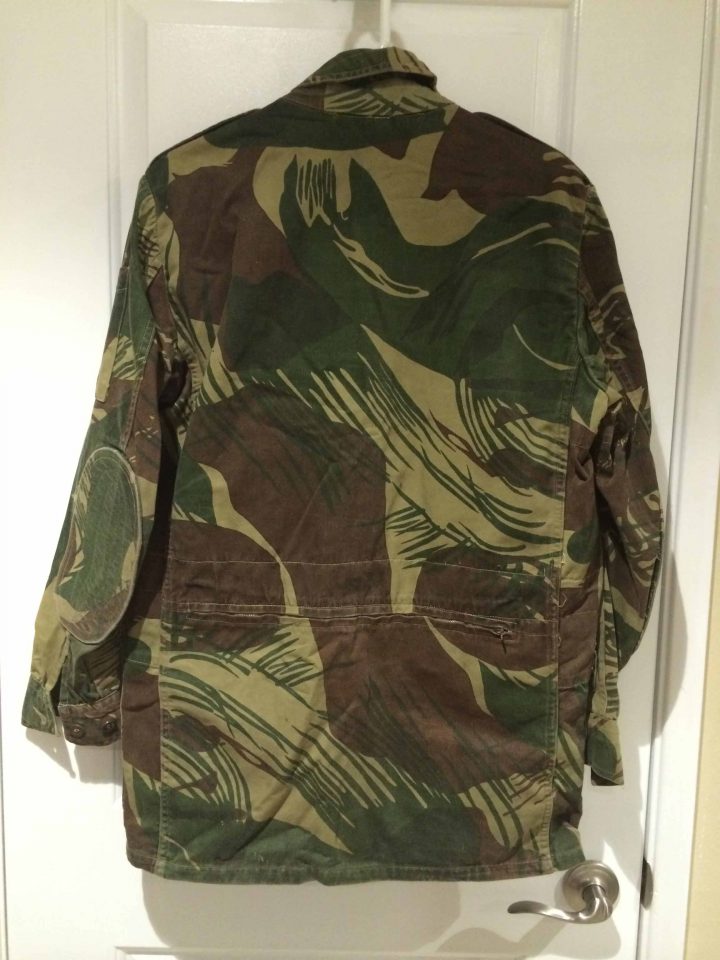
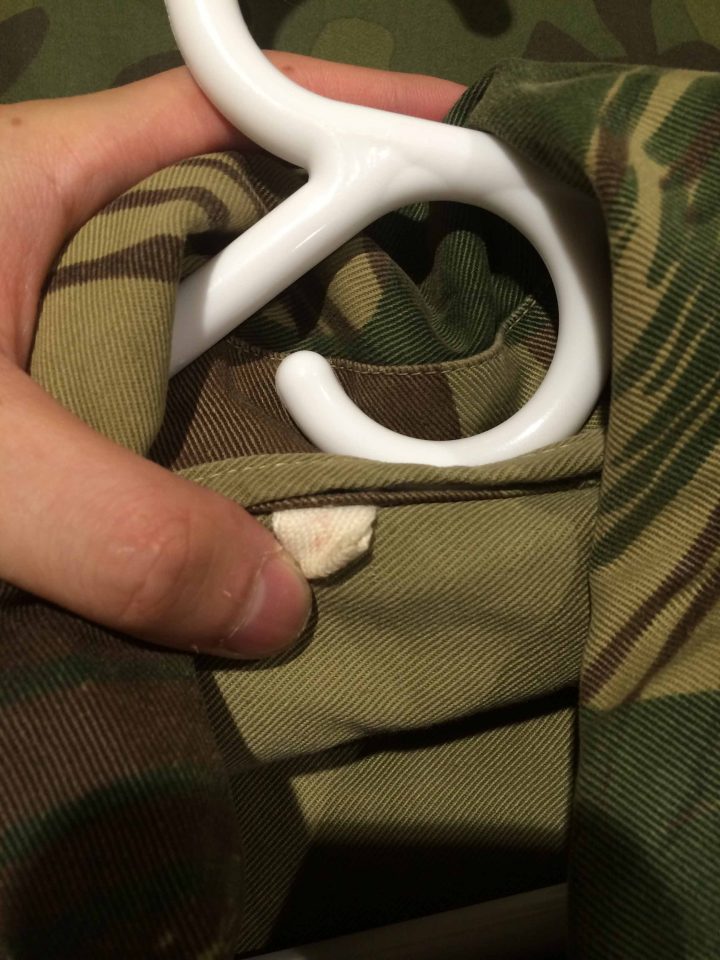
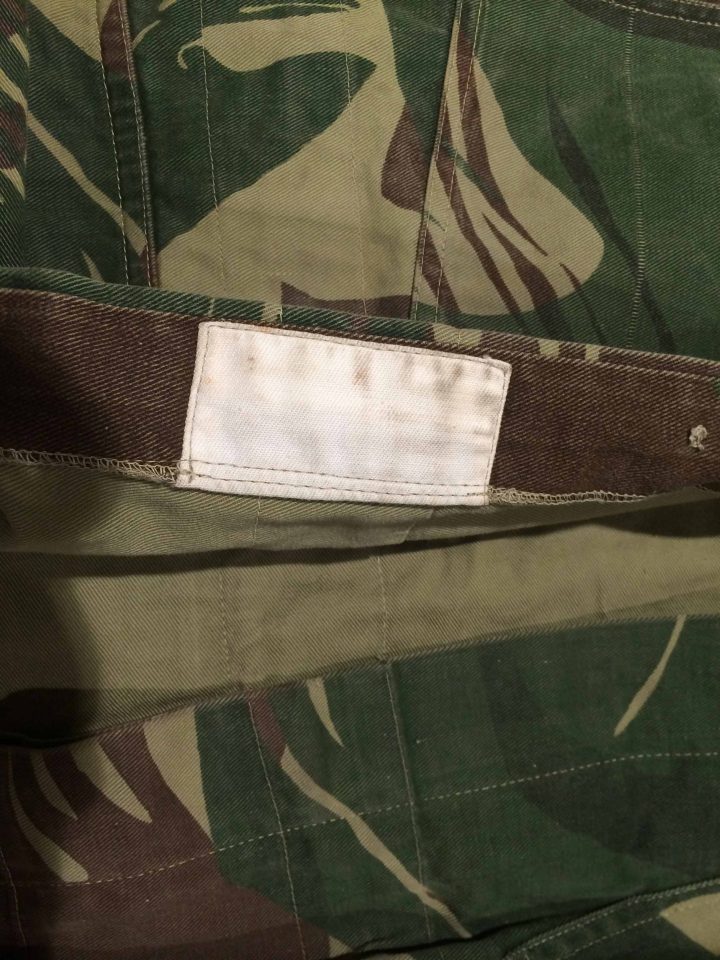
Identical to Sample 2, but much less faded. Likely from same dye lot as Sample 2. Note that shades of green and brown in dye lots should not be used to “date” items (that is what tags are for) since these varied throughout production life of items.
Sample 2: Earlier (Mid-War?) Bush Jacket #2
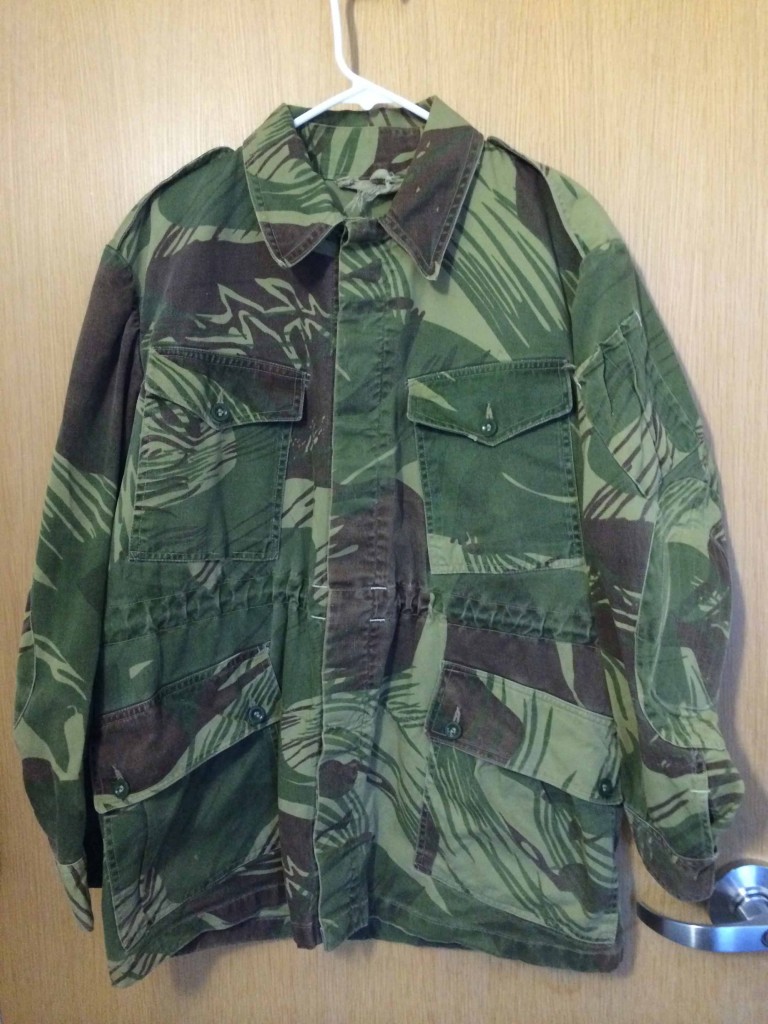
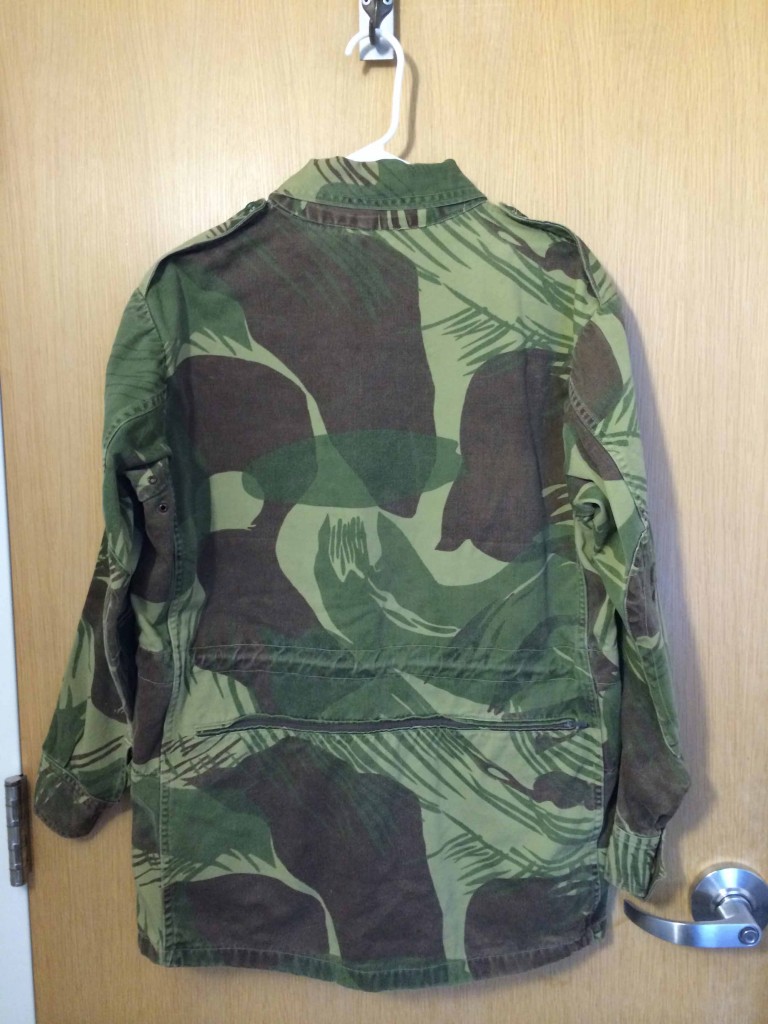
Earlier war production. Tag is attached only on one edge. No markings. Green internal drawstring intact. Has zippered pocket on bottom back outside.
Sample 3: Mid-Late War Bush Jacket #1
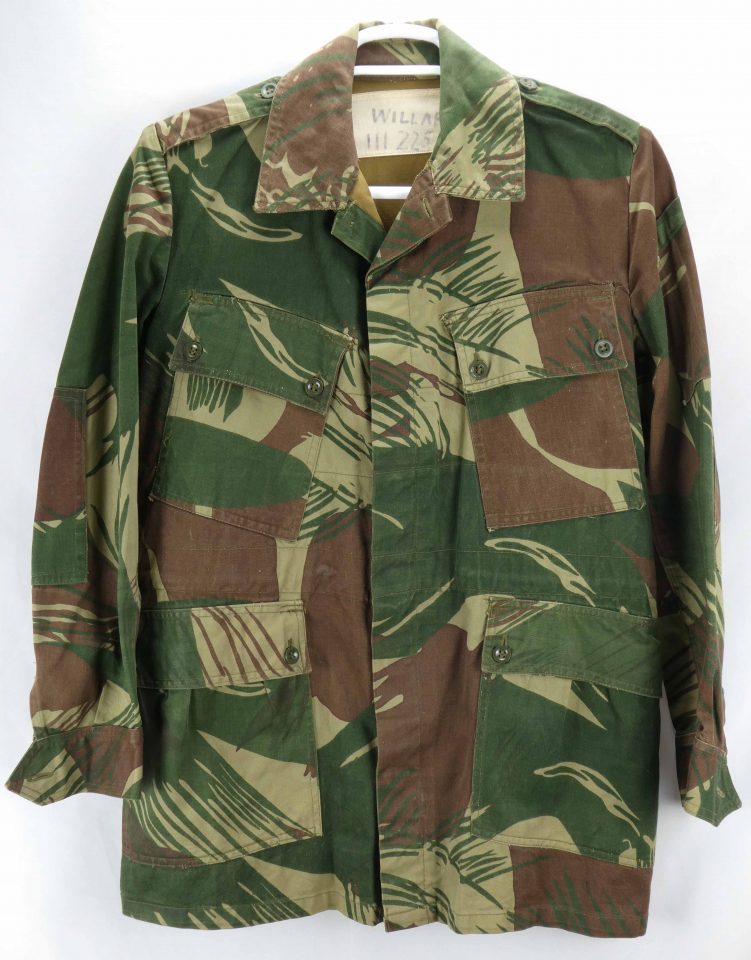
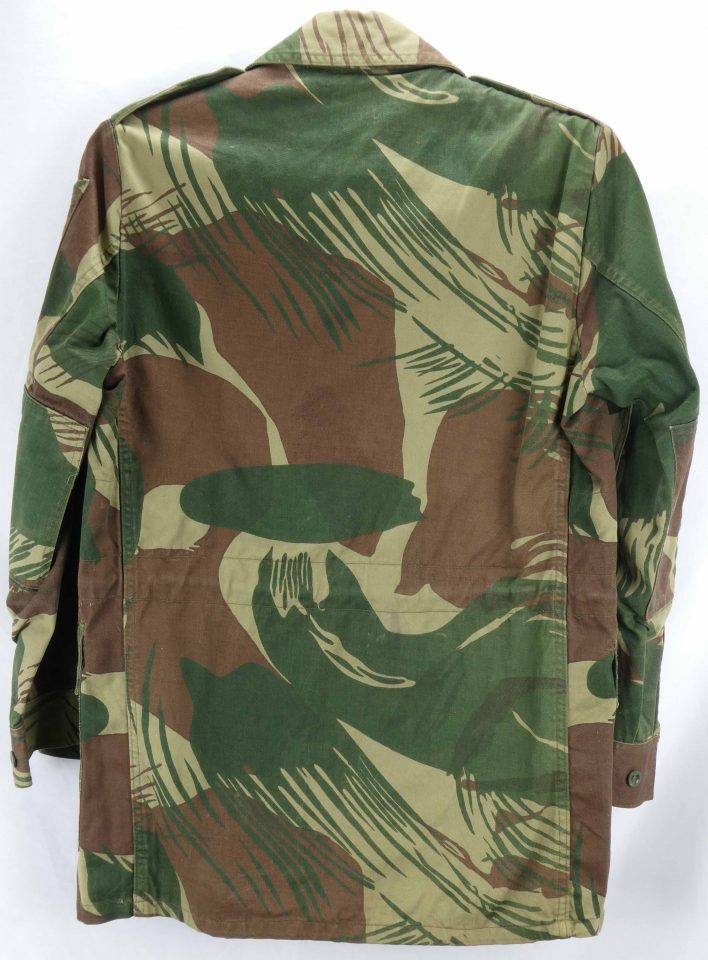
Based on the more simplified features that are similar to Sample 4 (below, has 1976 date), I think it is mid – late war production.
Issued to “Willard” (name written on inside back across tag). Tag faded, nearly unreadable. Says something about “Coats, Combat…”.
Sample 4: Mid-Late War Bush Jacket #2
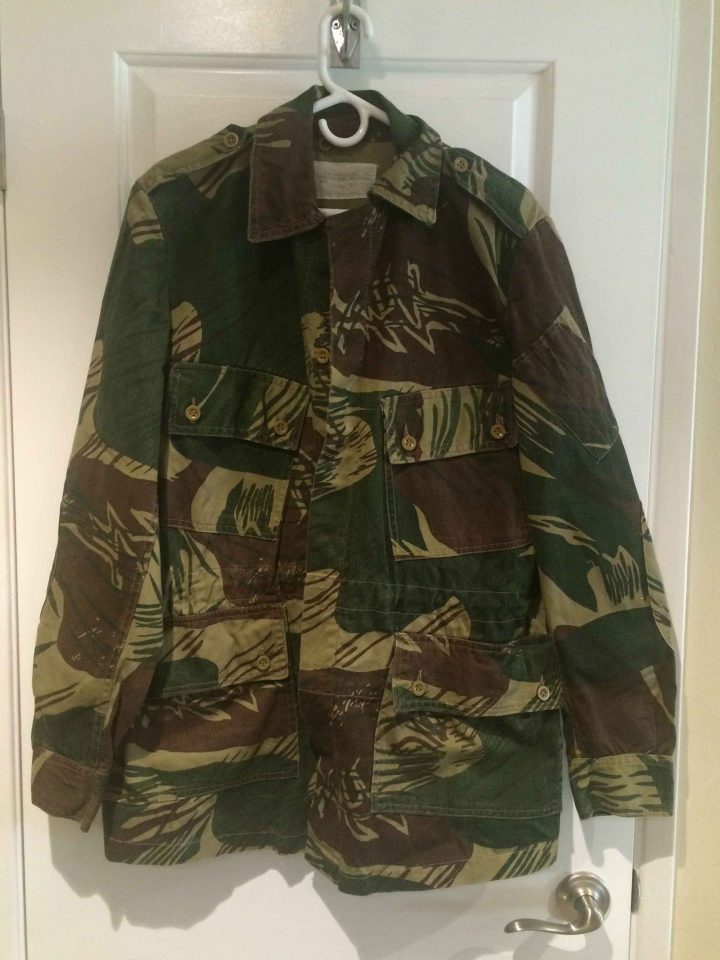
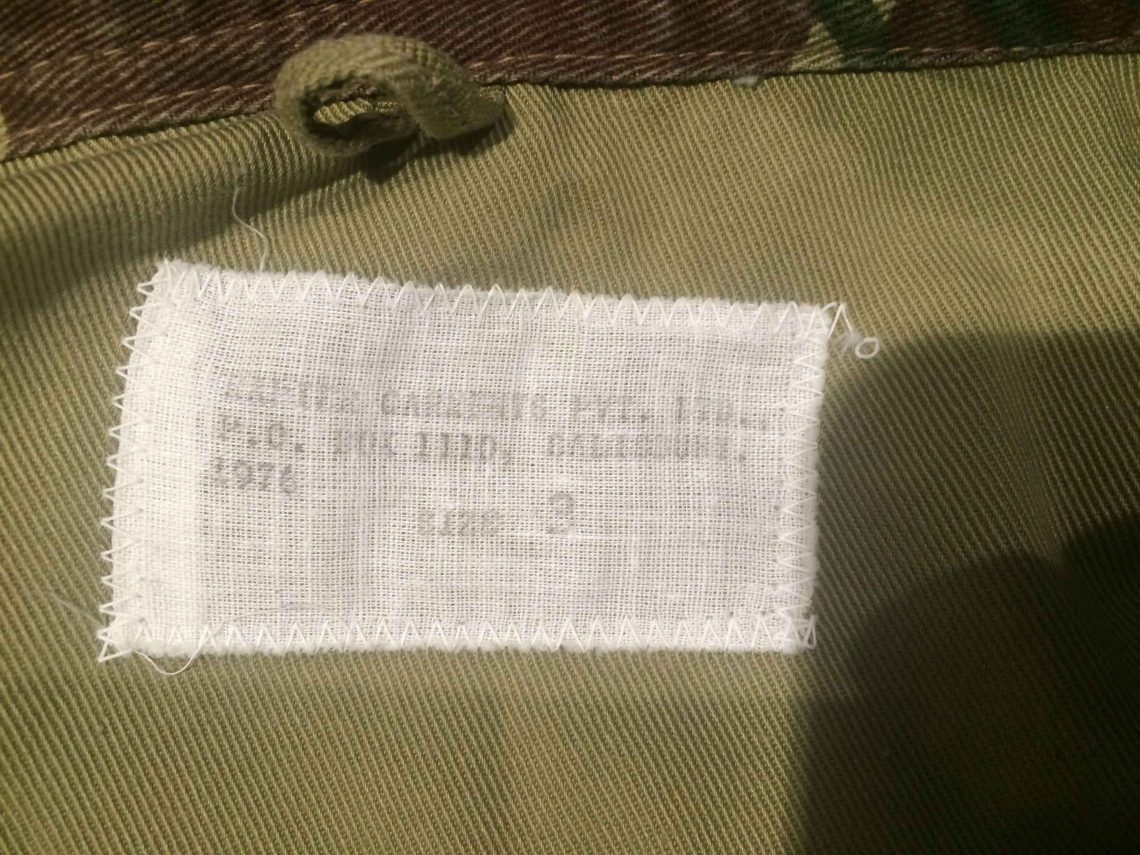
Much darker brown than Sample 3, otherwise identical in cut. Probably from different dye lot since dark brown does not redden with fading (See Sample 2). Tag is dated to 1976. Probably unissued and unused.
Shirts
Also British influenced due to Rhodesia’s British colonial heritage, these were based on the British tropical shirt. The shirts were made of a lighter weight cotton twill than the jackets.
Sample 5:
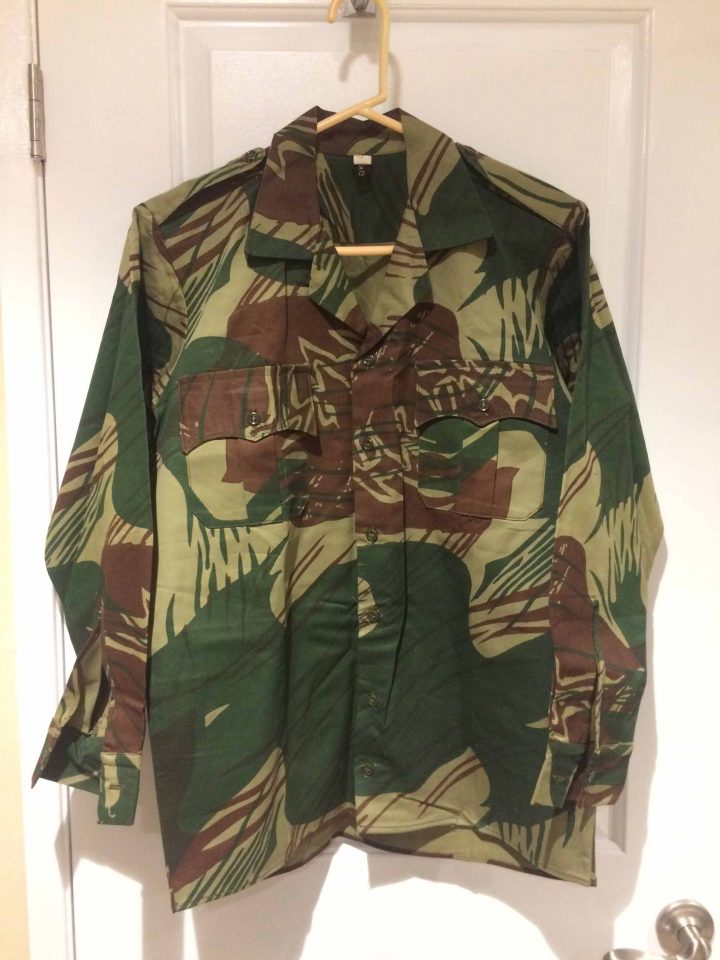
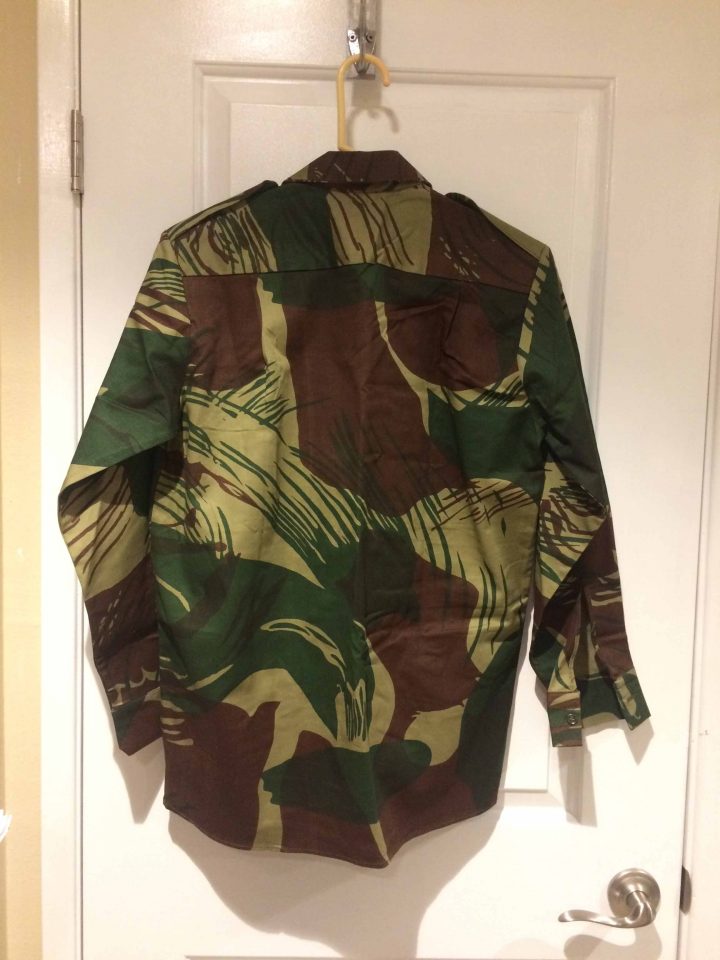

Mint condition shirt. Probably earlier production than Sample 6 (below) due to pleats on pockets, scallops on pocket flaps and other “extra” features. The current Zimbabwe army shirt tries to emulate this type of shirt.
Sample 6:
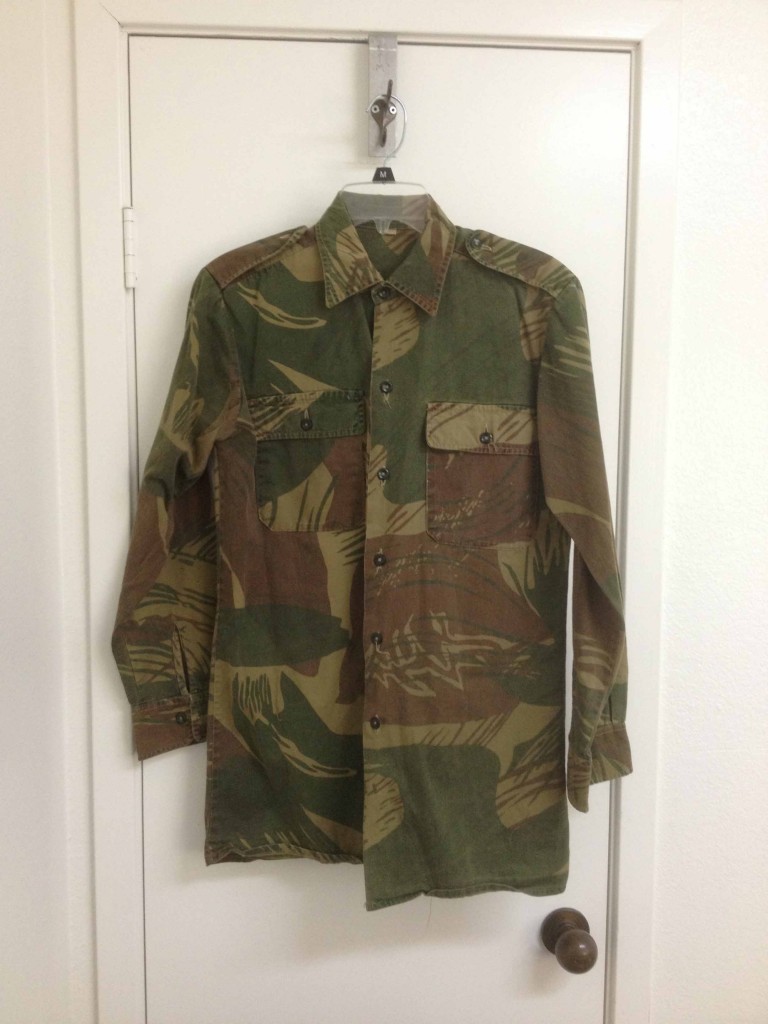
Likely later production due to more simplified details (no pleats on pockets, squared pocket flaps).
Trousers:
These trousers were made in the same lightweight twill as the shirts. It was a limited trial for the Rhodesian SAS, who ultimately did not use the items in the field since they were insufficiently druable. Instead, these lightweights were more often used for parades and other light duty, including by other units like the Rhodesian Light Infantry very late in the Bush War (1979, source: https://www.facebook.com/photo?fbid=10224217458047838&set=gm.3581434928630742 [veteran’s account])
SAS Lightweight #1:
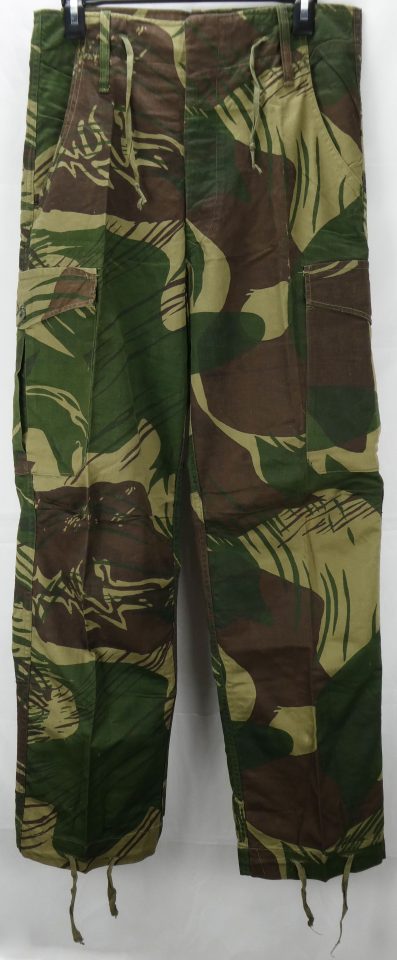
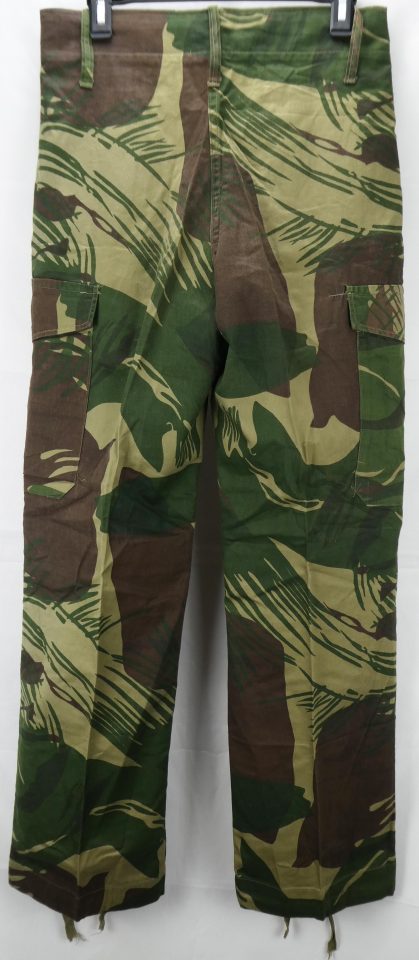
The lightweight trousers are often found in this cut that is clearly based on the British windproof’s (source: https://www.newrhodesian.ca/viewtopic.php?p=5248#p5248, https://www.newrhodesian.ca/viewtopic.php?p=97249#p97249).
Tag:
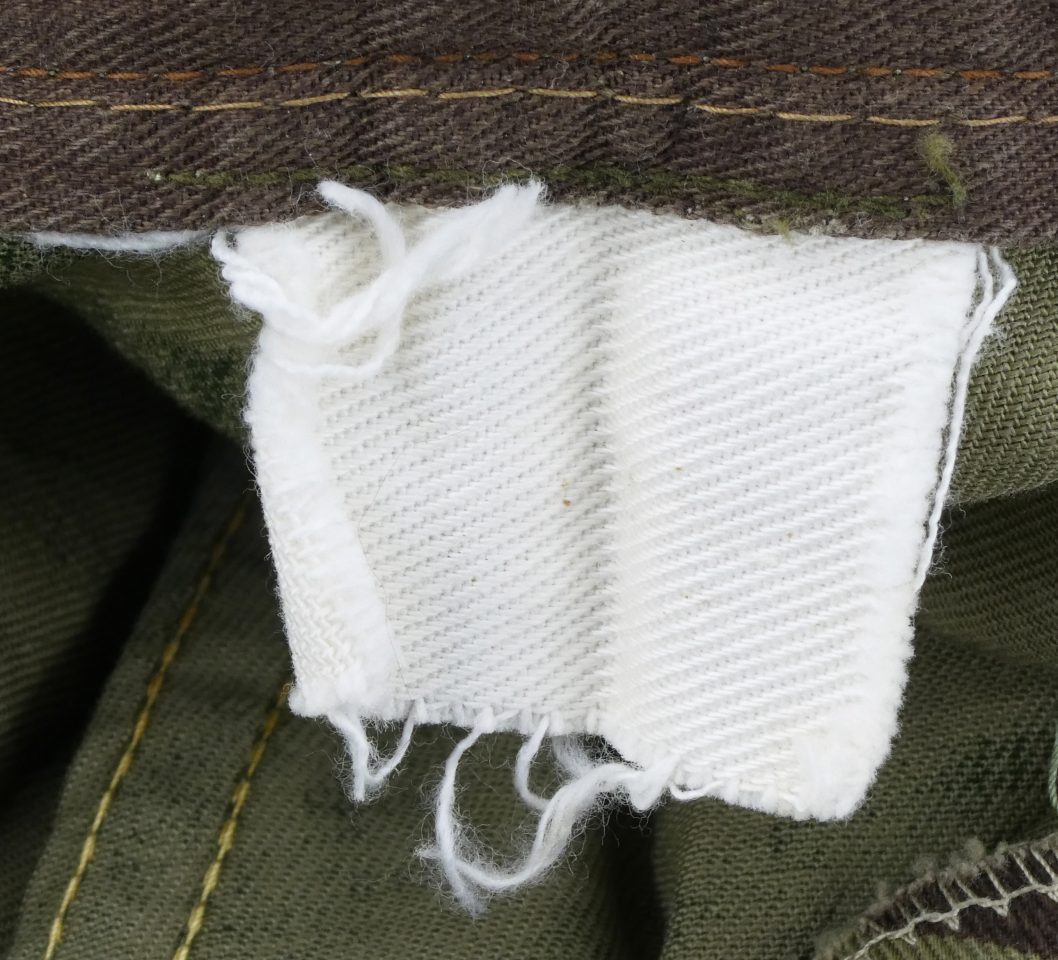
Thigh Pocket:
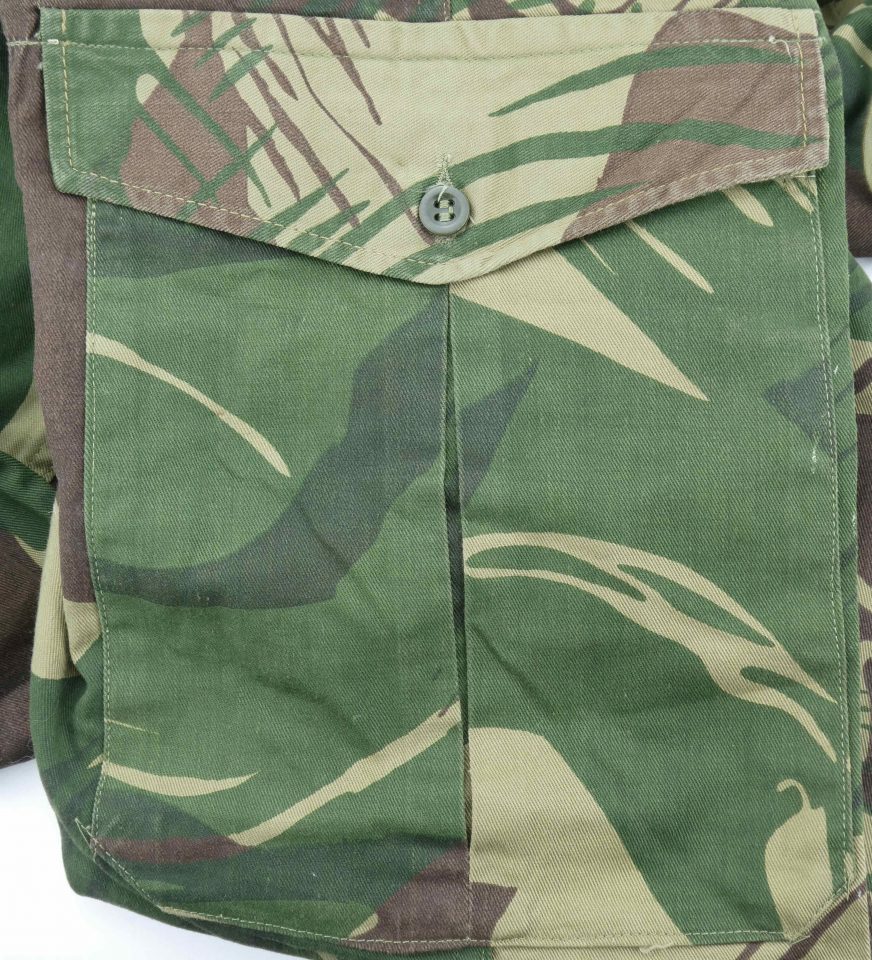
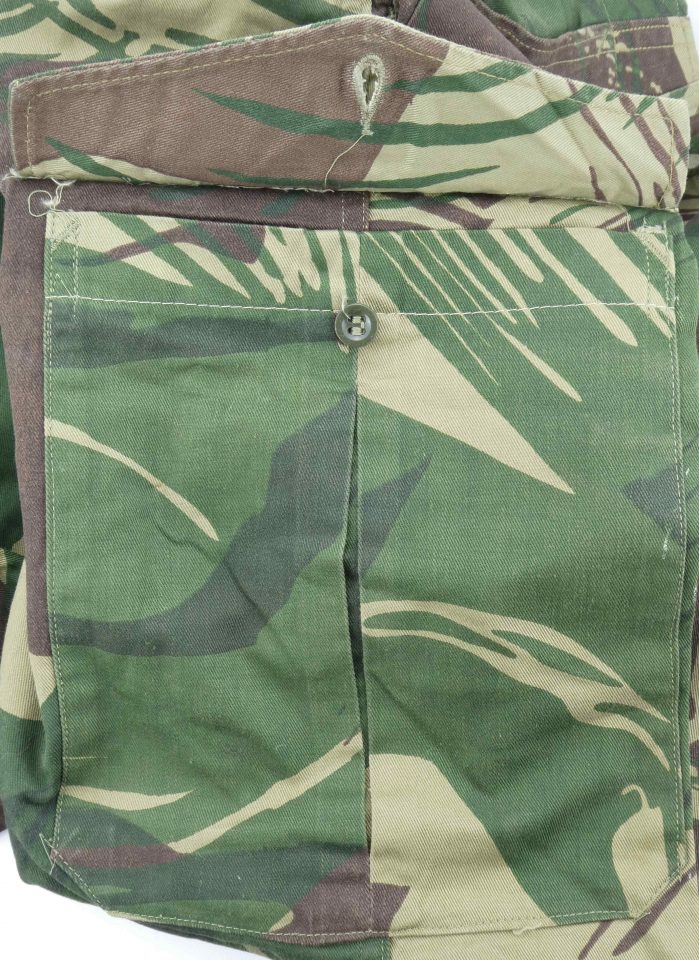
Inside:
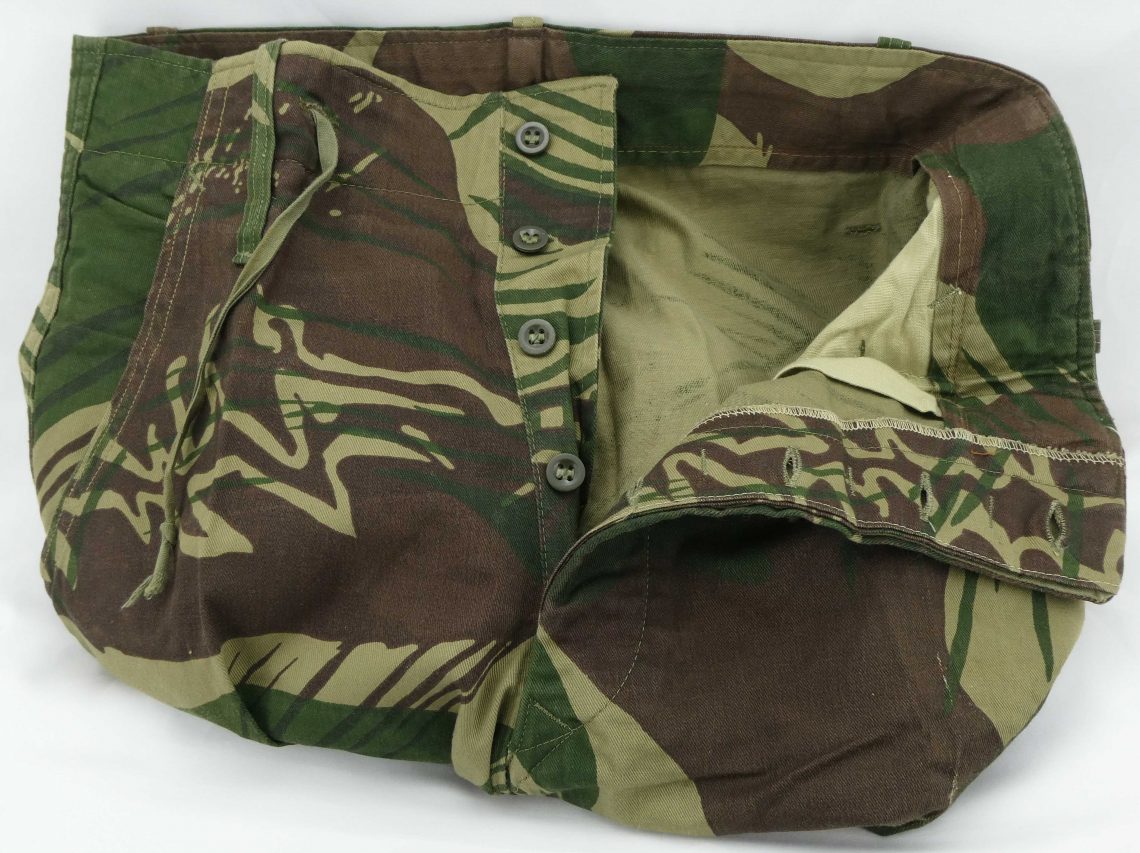
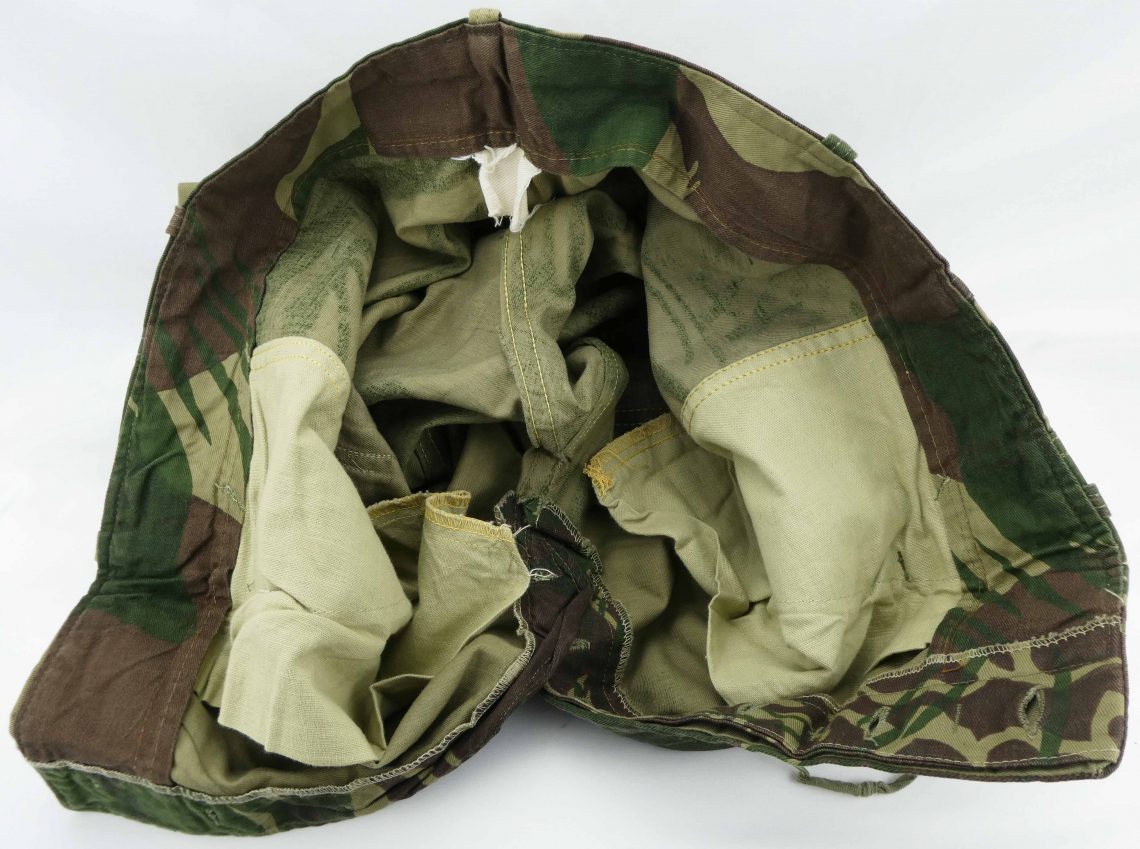
Ankles:
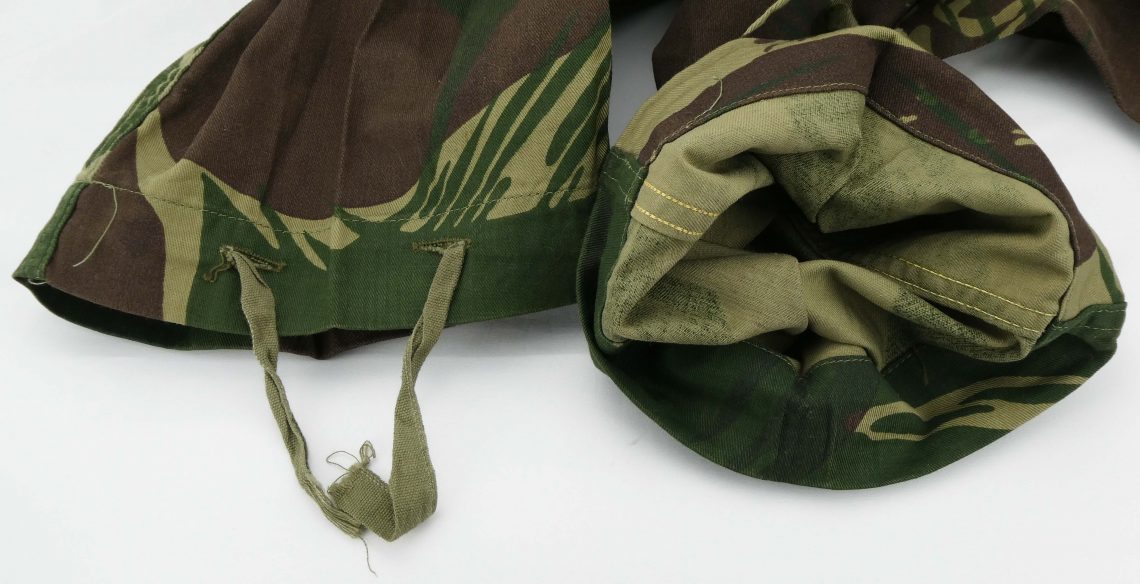
SAS Lightweight #2:

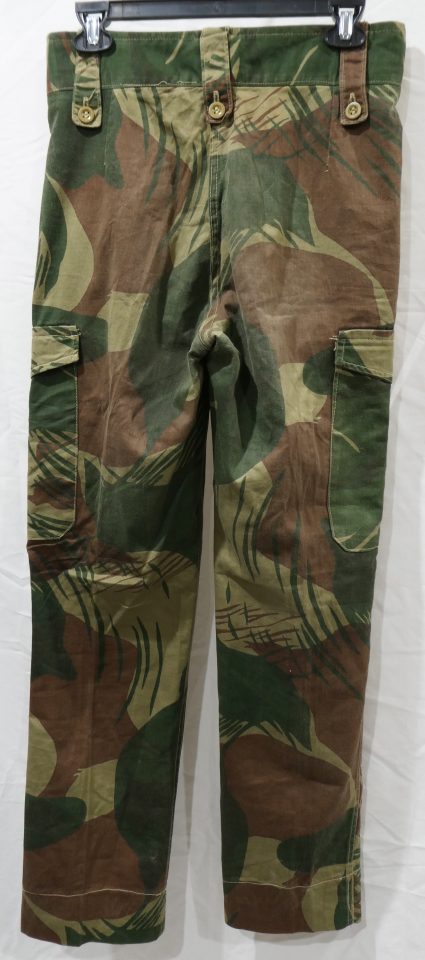
The pair show in these photos are not the typical SAS lightweight cut, which is more similar to the British windproof trousers (source: https://www.newrhodesian.ca/viewtopic.php?p=5248#p5248, https://www.newrhodesian.ca/viewtopic.php?p=97249#p97249). The ones here appear to be earlier production (1977) than those and are very similar to the cut of the standard issue trousers.
The main difference between these and the standard issue pants’ cut is that they lack the waist adjustment tabs. Like some late war pants in the standard heavy weight fabric, they have no reinforcement panels.
Tag:
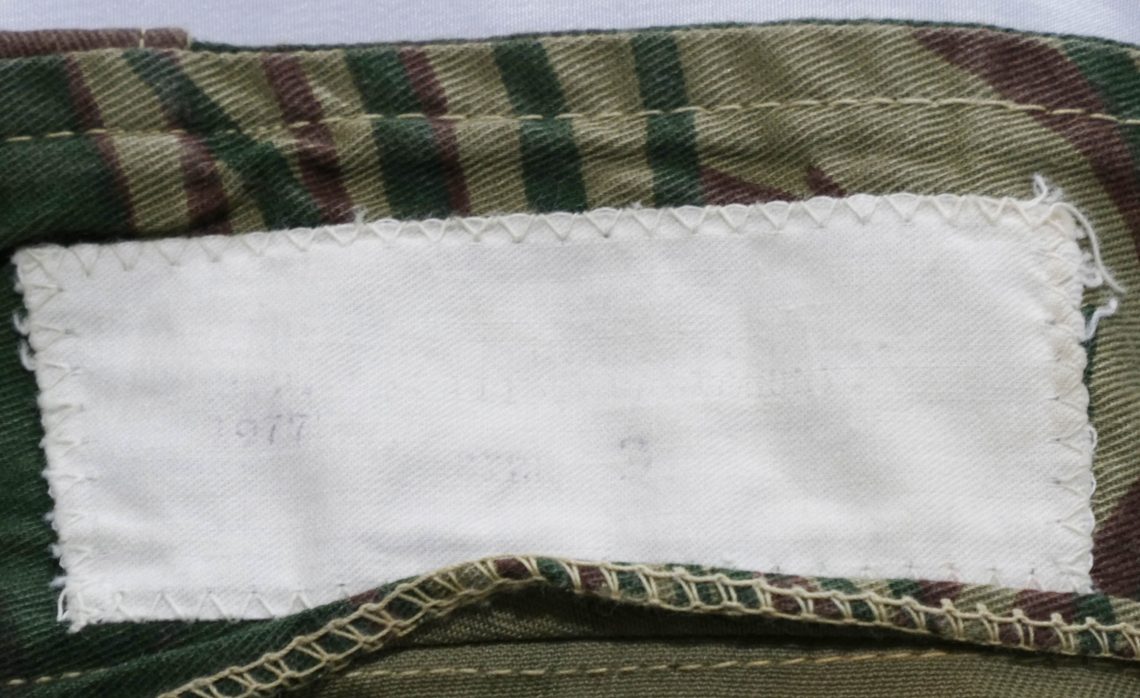
Pockets:
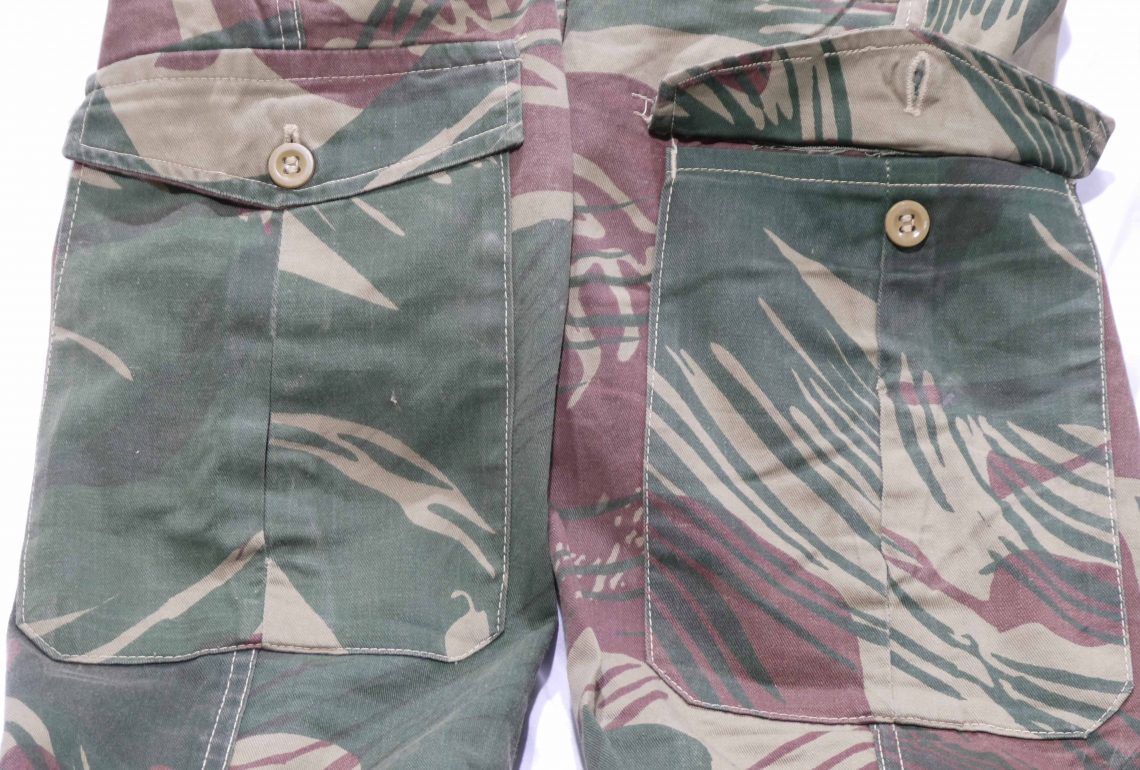
Inside:
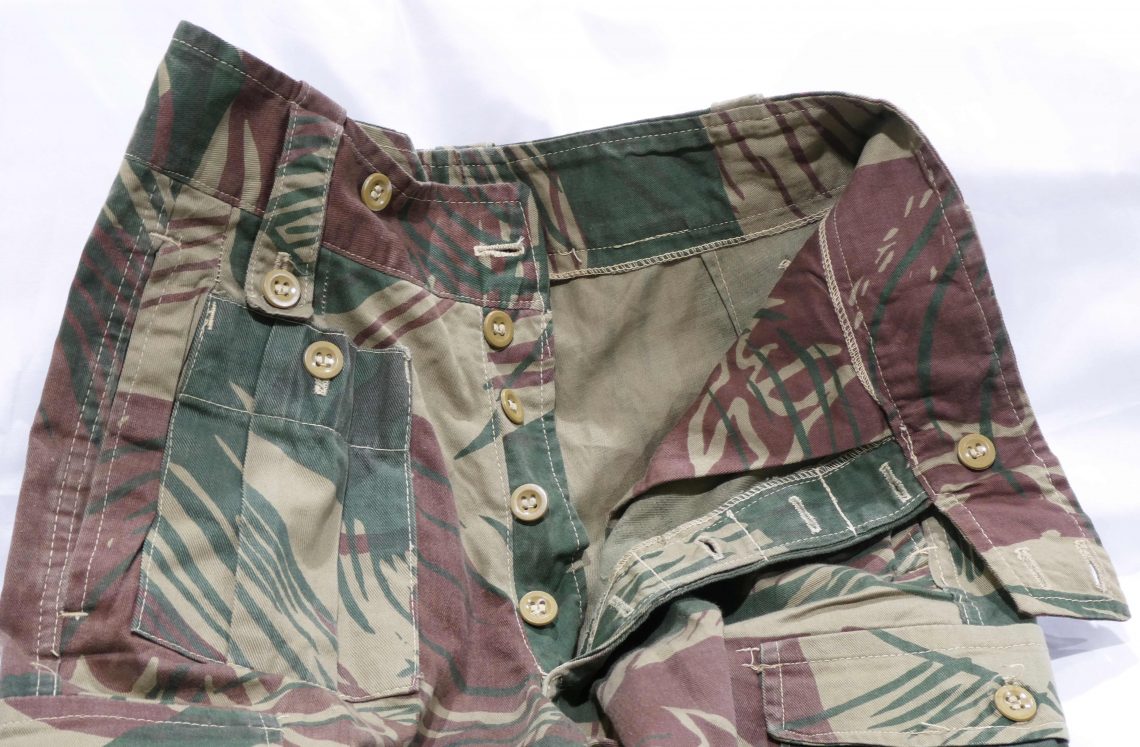
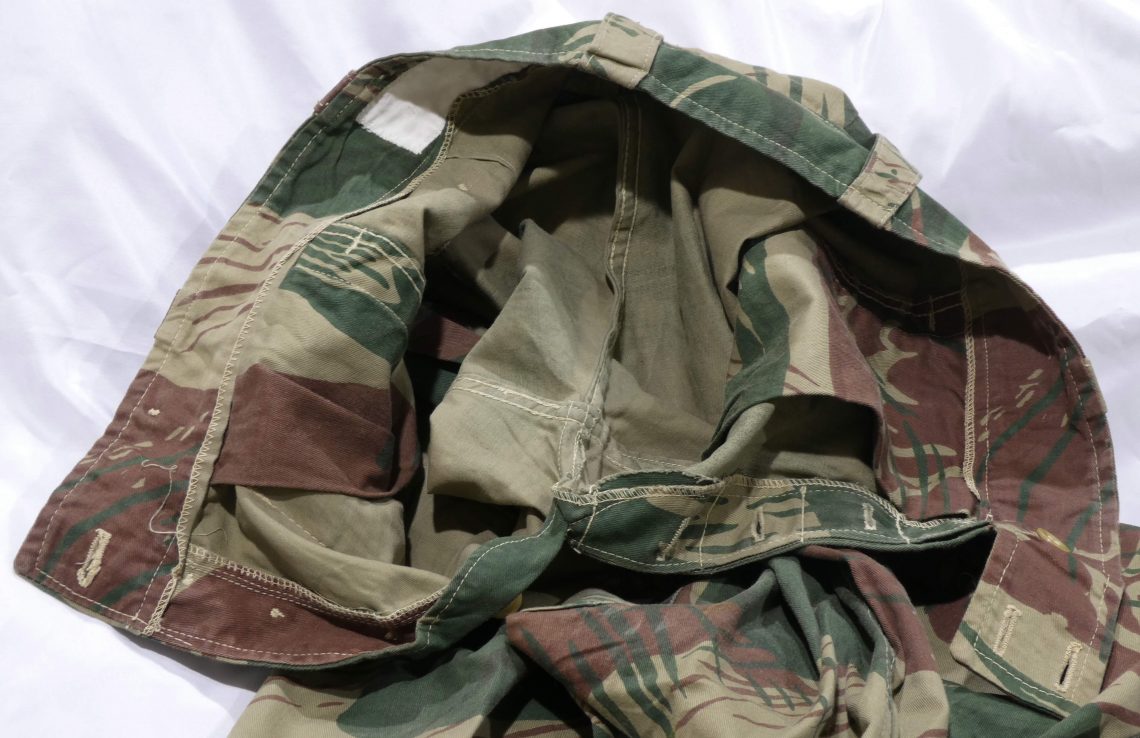
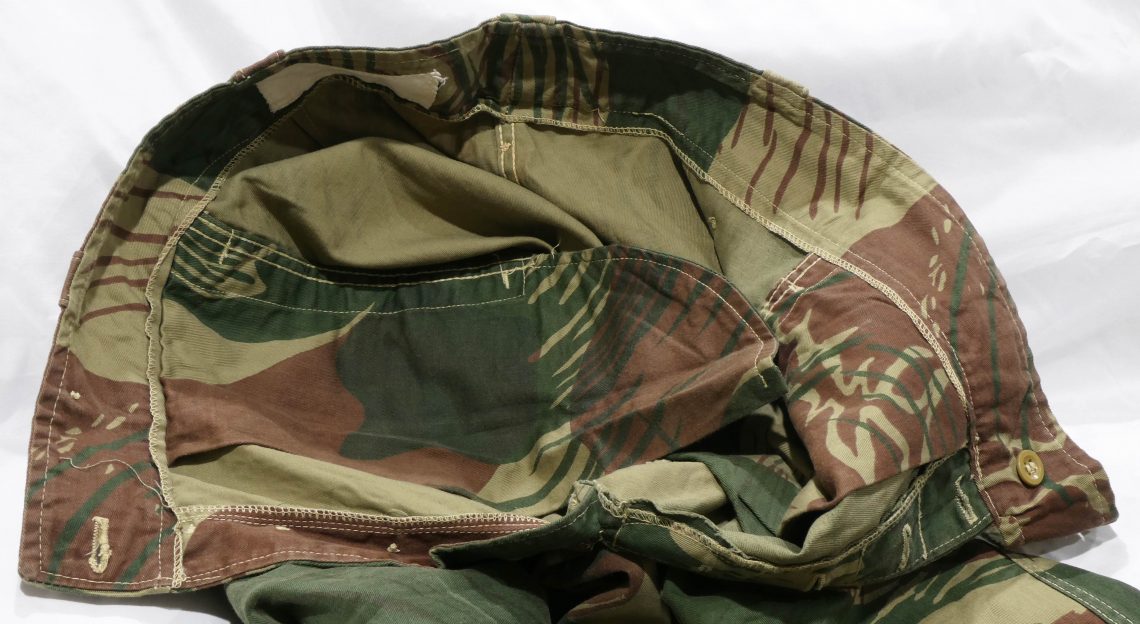
Cuffs:
No drawstrings like typical SAS version.
Hats
Sample 7: Boonie Hat
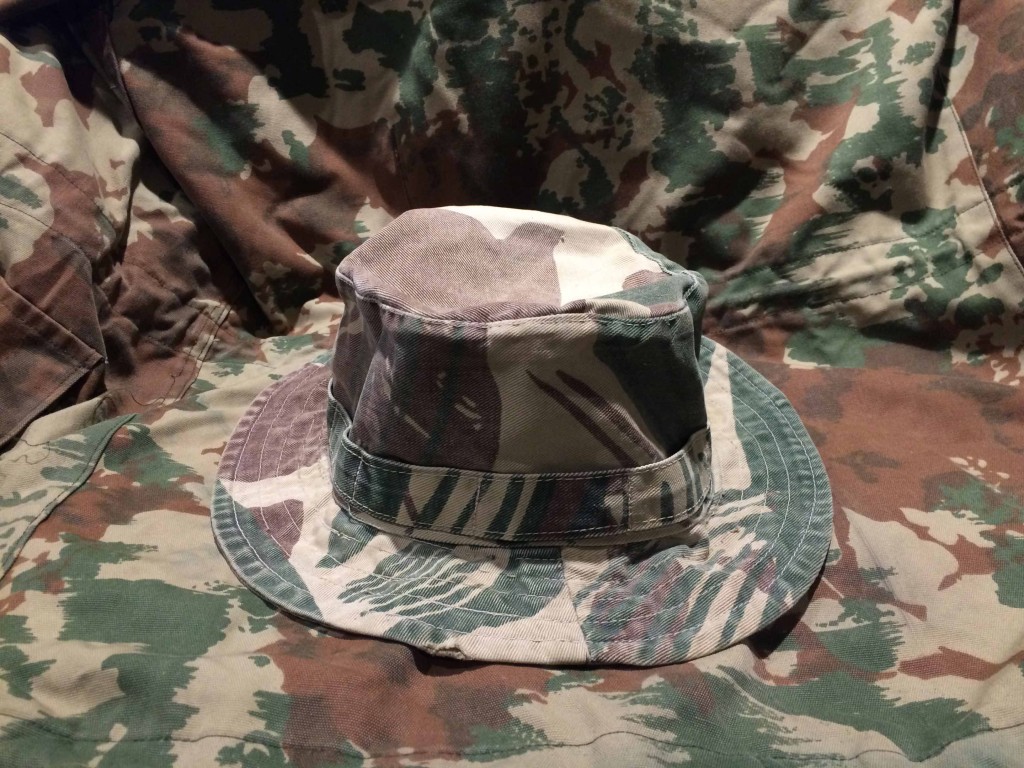
British/commonwealth style shorter brim.
Usage Photos:
Some Rhodesian camouflage items were used after 1980 by special units of the SADF like 44 Parachute Brigade (pictured below, Ken Gaudet from 1981), the Recces, and South African aligned units like Koevoet. “Unconventional” users included western-backed organizations like UNITA and RENAMO as well as their communist-backed opponents (ANC, MPLA, PAC).
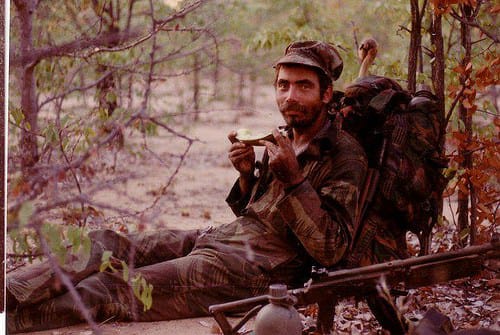
Koevoet (1980’s):
The images below were taken in July, 1988 and show Warrant Officer Attie Hattingh unofficially wearing a Rhodesian camouflage jacket. This does not appear to have been commonly done in the unit since they were only authorized to wear the SWAPOL pattern that became associated with them, the South African Police pattern, and, after March 1986, a solid green uniform.
From left: Special Warrant Officer David Absalom Aviva wearing standard-issue trousers, sweater (with rank) and beret. The only non-standard item is the leather belt. Among the blacks only senior NCOs were issued a pistol. I never saw a white wear the beret or carry a pistol in the bush. Next, Police Constable Andre Syman. From canvas boots to bush hat all is standard issue. At right, Zulu Uniform team leader Warrant Officer Attie Hattingh wearing obsolete (since March 1986) camo jacket over personal sweater, track suit bottoms and bobble cap.
There were no rules about what to wear in the veld. Koevoet’s CO didn’t believe that it affected performance in combat, so left the decision to the operators.
Information from Jim Hooper via correspondence over email on February 20, 2020
July 1988, winter in Ovamboland, northern Namibia, where temperatures can drop below freezing at night. WO Attie Hattingh, Zulu Uniform team leader wears the obsolete … camo jacket. Sitting behind his turret with a GA-1 20mm gun and Browning 7.62mm, he is reporting that his trackers have found ten sets of fresh spoor crossing the Chandelier Road. Less than two hours later, five insurgents are dead but two members of Koevoet have lost legs from anti-armor rifle grenades.
This photo was also printed in the article “The Accidental Target” on Page 35 of November 1989 issue of Soldier of Fortune Magazine.
Koevoet images and captions above used by permission of Jim Hooper, author of Koevoet – Experiencing South Africa’s Deadly Bush War, a first-person account of a western journalist embedded within Koevoet.
Albanian Royal Guard:
The Albanian Royal Guard was a breakaway faction loyal to the Albanian royal family that had gone into exile starting in 1939. During the 1970’s, they as well as the royal family lived in Rhodesia.
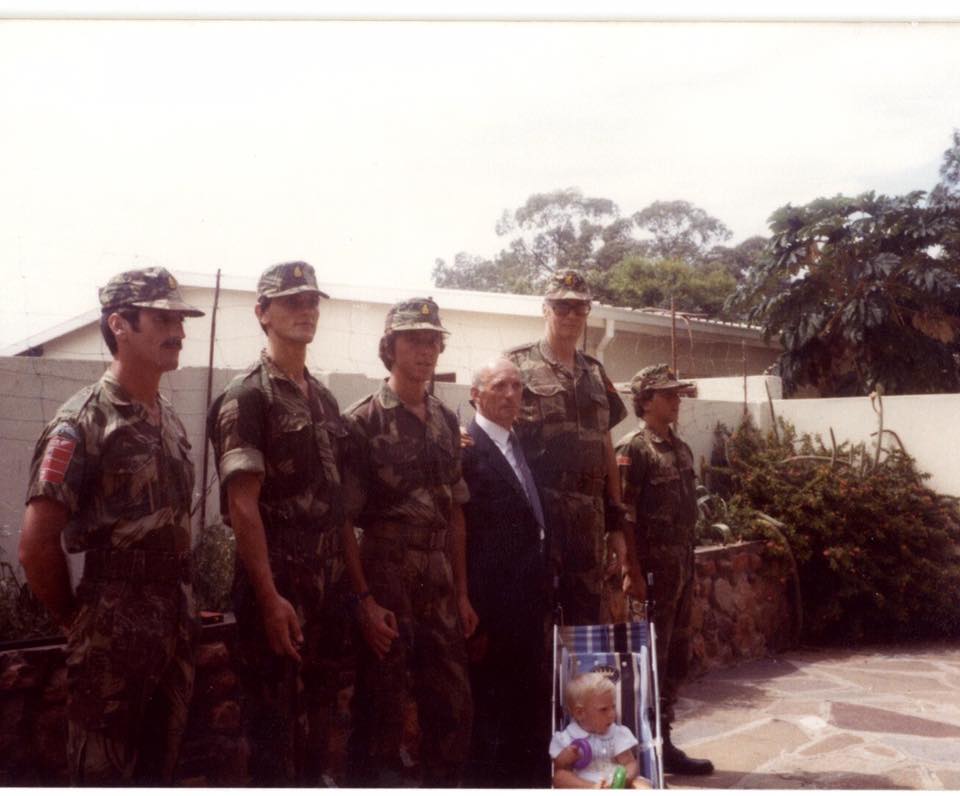
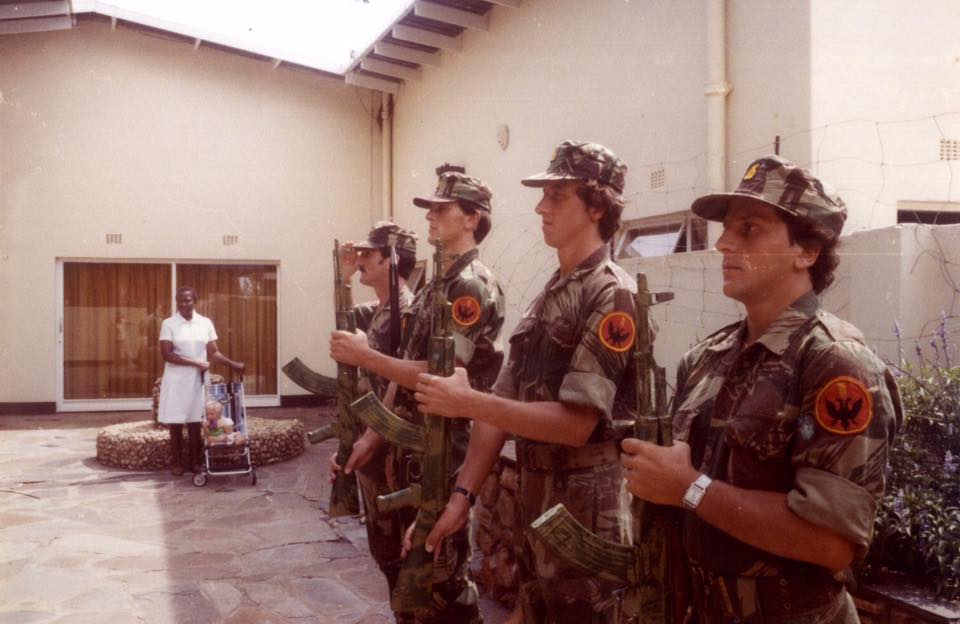
In 1997, when the king briefly returned to Albania for its monarchy referendum, he was seen wearing a Rhodesian camouflage uniform when protesting the outcome.
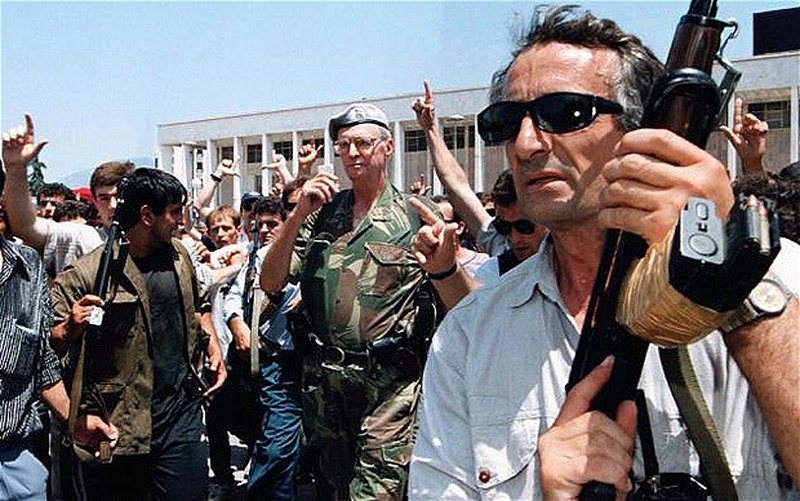
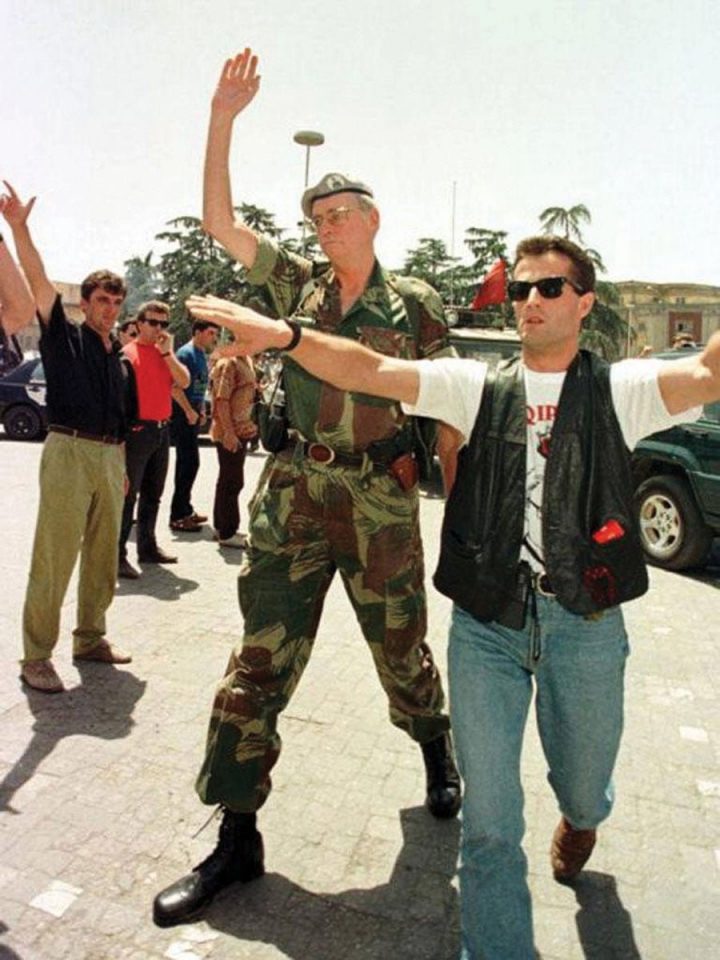

Insurgents:
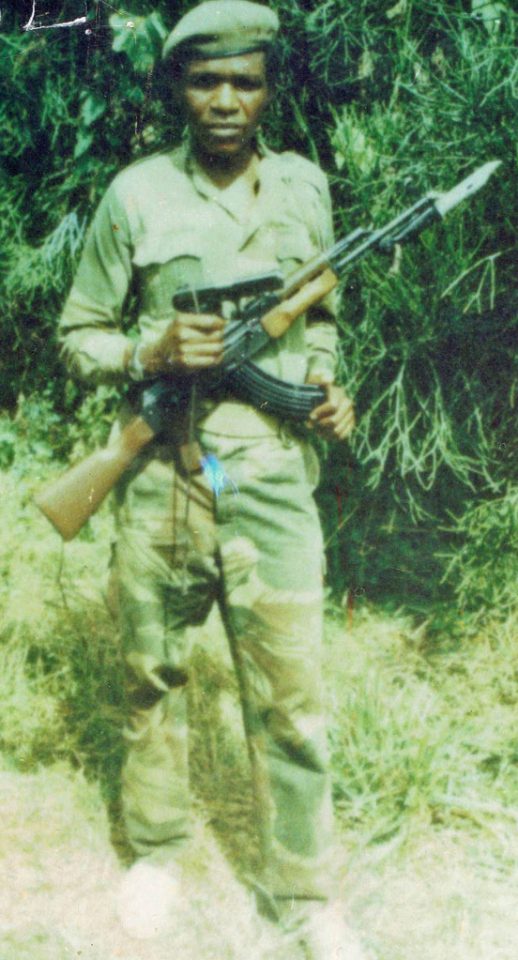
Other Rhodesian Camouflage Patterns:
For earliest version, see http://kommandopost.com/index.php/2016/05/13/rhodesian-1st-pattern-camouflage-1965-1966/
For arid season “prototype”, see http://kommandopost.com/index.php/2015/09/08/rhodesian-arid-brushstroke-pattern-1960s/
For Zimbabwe version, see https://kommandopost.com/index.php/2017/03/11/zimbabwe-camo/
